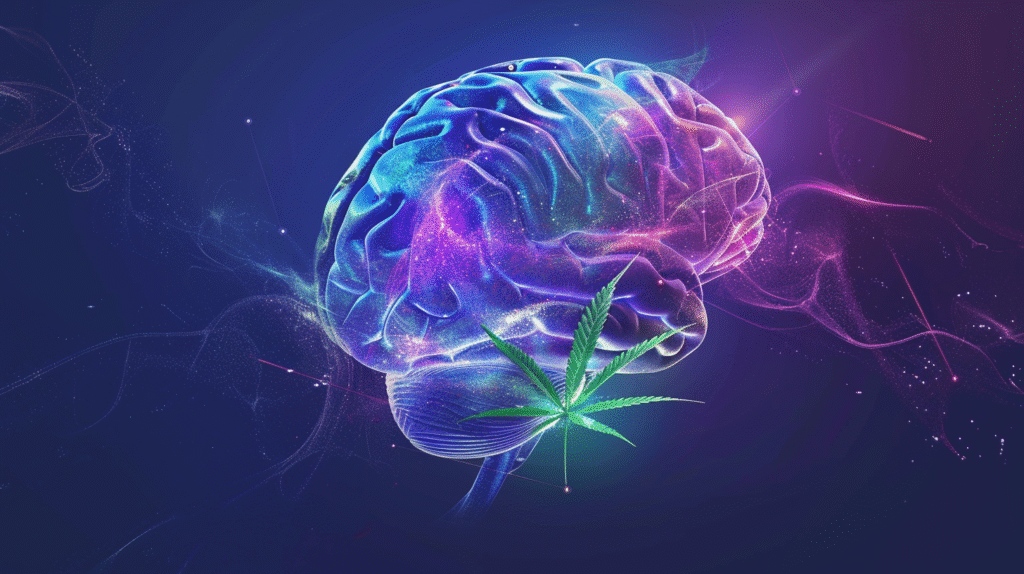AI Discovers Terpenes Drive Cannabis Pain Relief, Not Just THC

A recent study found that medical cannabis does actually reduce pain—and that the combination of cannabinoids and terpenes is more critical than THC or CBD quantities.
Scientists studied 329 patients who had used controlled cannabis and discovered ~200 cannabinoids and terpenes in the strains that they used.
Models that took chemical composition into account were substantially more accurate at predicting pain relief than those relying on patient demographics alone. Since patients were blinded to the specific combinations they received, this improved the accuracy of the study, meaning findings cannot be attributed to placebo effect.
Importantly, terpenes such as α-bisabolol and eucalyptol predicted therapeutic outcomes more accurately than THC or CBD alone, supporting the entourage effect hypothesis.
Published in Communications Medicine on July 16, 2025, the study recommends that cannabis labeling and prescribing goes beyond THC and CBD percentages to include standardized terpene analytics, helping clinicians identify optimal strains for their patients.
The study has some limitations, including a brief one-month follow-up period and reliance on patient-reported pain scores. However, it provides the strongest evidence to date that different cannabinoid and terpene profiles can predict treatment outcomes in real patients.
For cannabis producers, the message is simple: grow to target specific cannabinoid and terpene profiles, not to a single molecule such as THC or CBD.
Patients can expect future clinical guidance to recommend specific terpene profiles tailored to conditions like neuropathic and inflammatory pain, marking a transition from the current focus on THC strength to true precision plant medicine.
Source: marijuanamoment.net
UK Medical Cannabis Acceptance Surges for Pain, Women’s Health

A recent poll of 500 NHS doctors reflects changing public opinion: 87% of those asked report they’d be pleased to prescribe medical cannabis for chronic pain if it’s put on the standard list of NHS options, and 80% of GPs want to consider it in women’s health conditions like endometriosis, PMDD and symptoms of the menopause.
Three-quarters assert treatments for chronic persistent pain have concerning long-term side effects, and two-thirds of respondents say pain patients overwhelm weekly cases—making a diversification of treatment options essential.
The Alternaleaf survey, reported on by Cannabis Health News on August 14, 2025, also shows the access gap: private prescriptions have increased dramatically year-over-year but access through the NHS is “virtually non-existent.”
The physicians polled in the article demand improved training, tougher guidelines, and more research—particularly in the under-served area of women’s health care, where the patient must wait four weeks and undergo trial-and-error pharmacotherapy.
Caveat: commissioned, not peer-reviewed, and little detail on methodology. But the message is clear—front-line physicians are welcoming cannabis, especially in areas where alternative choices are limited or poorly tolerated.
Source: cannabishealthnews.co.uk
Canada Powers Germany’s Growth, But Tighter Rules Loom

Germany imported 43,257 kg of medical cannabis during Q2 2025, and Canada provided 20,107 kg—half as much—according to recent figures collected by StratCann (Aug 7, 2025).
Portugal came in at second (13,465 kg), frequently serving as an EU production center.
The market remains robust despite Berlin considering legislation that would ban tele-authentications and mail-order cannabis shipments from pharmacies—reforms that industry stakeholders warn could disadvantage patients living far from dispensaries and push others toward illicit channels.
For Canadian exporters, German demand is a lifeline: premiums, good quality specs, and pharmacy distribution.
At the same time, German companies are slowly ramping up local production. When regulators restrict online sales, imports will decline—but for now, Germany’s medical market remains the top overseas destination for high-quality cannabis flower and cannabis products.
For medical cannabis users, establishing diversified supply chains across Denmark, Portugal, and Canada provides policy risk mitigation while preserving continuity of care.
Source: stratcann.com
Cannabis May Keep Aging Brains ‘Younger,’ Study Suggests

A large preprint (currently under review) of UK Biobank neuro-imaging and cognition has discovered that there are patterns of functional connectivity in cannabis users typical of younger brains and better performance on a set of tests of cognition.
Using a completely automated, whole-brain network method in tens of thousands of participants, the researchers establish shared neural signatures for cannabis use and heightened cognition—between subcortical and cerebellar regions and sensorimotor and visual networks, respectively—correlated with a seemingly slowed neural aging.
Brain connectivity patterns linked to cannabis use were moderately to strongly associated with cognitive performance.
The researchers acknowledge several limitations, including the observational study design, dependence on self-reported cannabis use, and potential confounding factors such as tobacco, alcohol, and other health conditions.
Because it is a preprint, the findings have had no peer review and should be considered with caution—but the sample size and methodology make it a highly compelling addition to the “cannabis and aging” literature.
If replicable, subsequent trials can investigate the possibility that specific cannabinoid profiles or dosing regimens optimally enhance brain function in mid to late life.
Source: researchsquare.com
New Compounds Found in Cannabis Leaves—A Simple Win for “Waste” Material

Scientists in South Africa have identified a unique group of plant compounds in cannabis leaves that most cultivators discard. The compounds are flavoalkaloids—a combination of flavonoids and alkaloids that tend to exhibit antioxidant and anti-inflammatory properties in other plants.
The scientists examined leaves from three commercial strains and mapped the plant chemicals therein. They identified 79 phenolic compounds, 25 previously unreported in cannabis, and 16 that seem to be flavoalkaloids. Most manifested in the leaves of a single strain, which suggests variety selection is key if you’re trying to capture them.
How did they do it? Using sophisticated yet simple tools: they split up the mixture (a highly precise liquid filtering process) and weighed molecules using a high-resolution detector. In short: they sorted the soup and weighed the ingredients.
Cultural note: leaves aren’t always “waste” everywhere. In Jamaica, mild “ganja tea”—an infusion made with leaves and stems—has appeared in folk bush medicine and in Rastafari practice for ages; anthropologist Melanie Dreher’s classic fieldwork described leaf-based teas alongside smoking in rural communities
Why it matters: rather than composting leaves, farmers could recycle them into novel extracts—if follow-up research confirms the precise structures and demonstrates actual health benefits and safety.
Next steps are obvious: pin down the chemistry, screen for bioactivity, and work out practical methods for extracting these compounds on a large scale.
source: cannabisheathnews.co.uk


